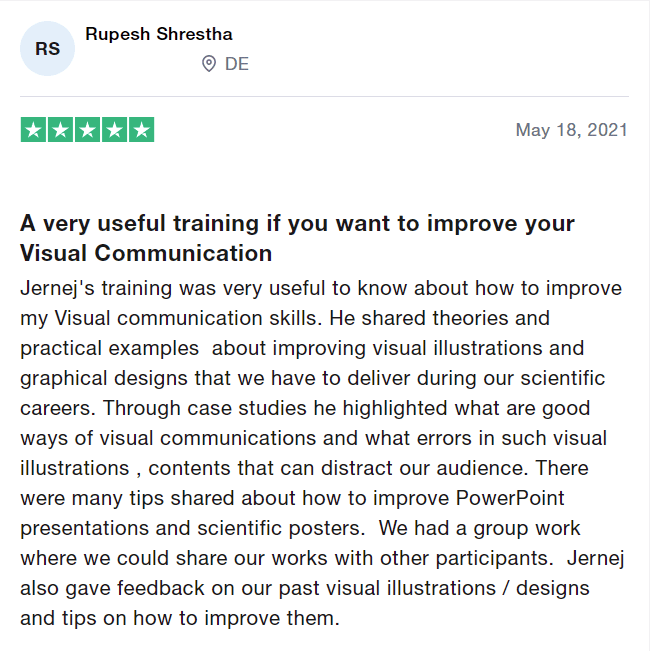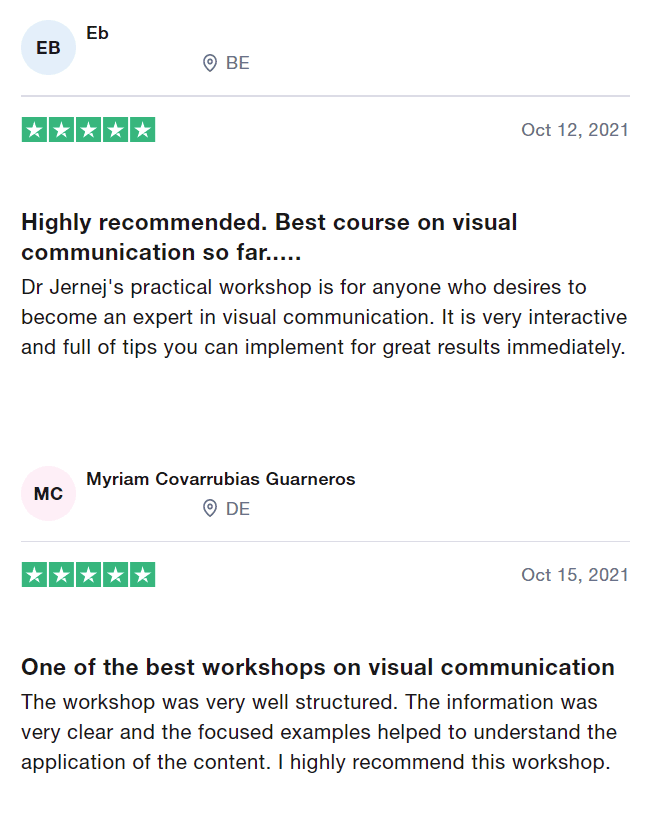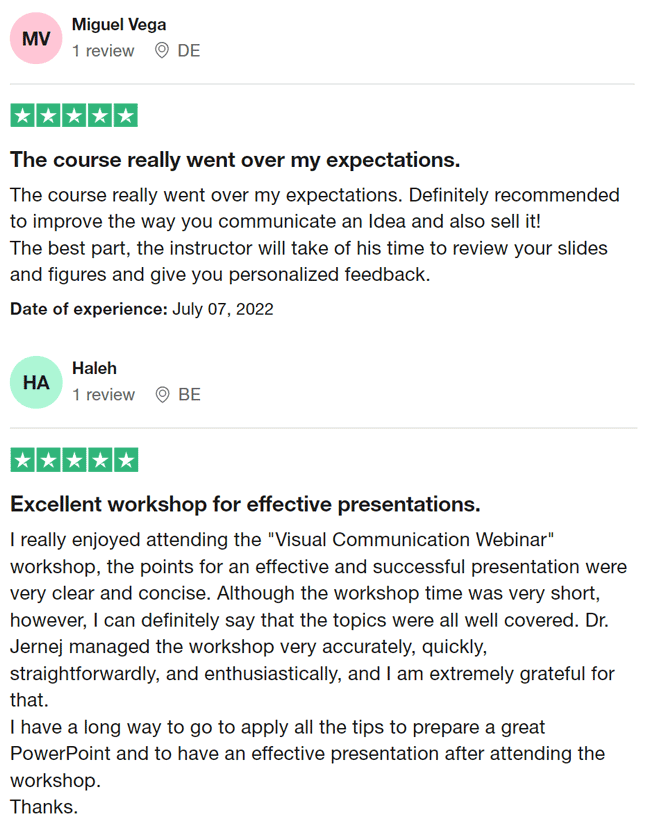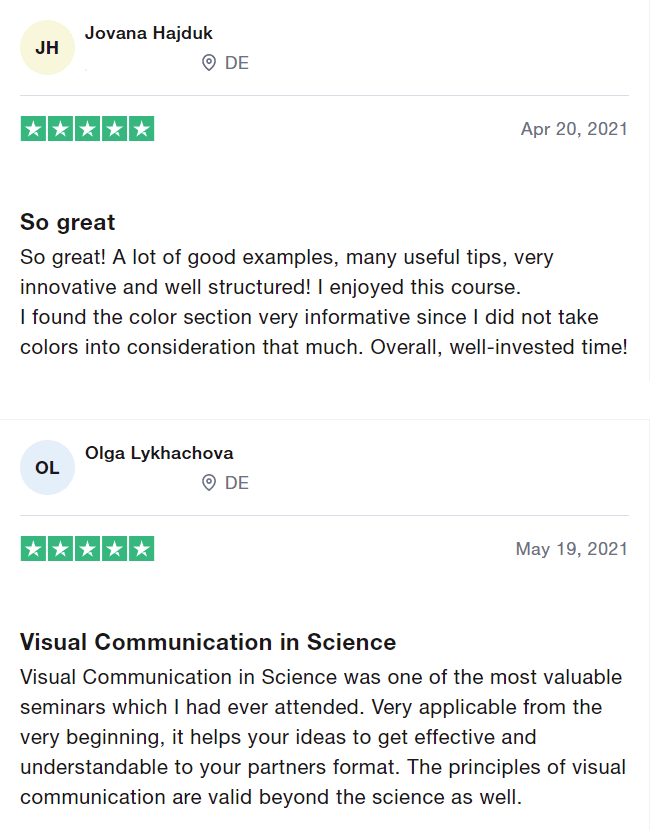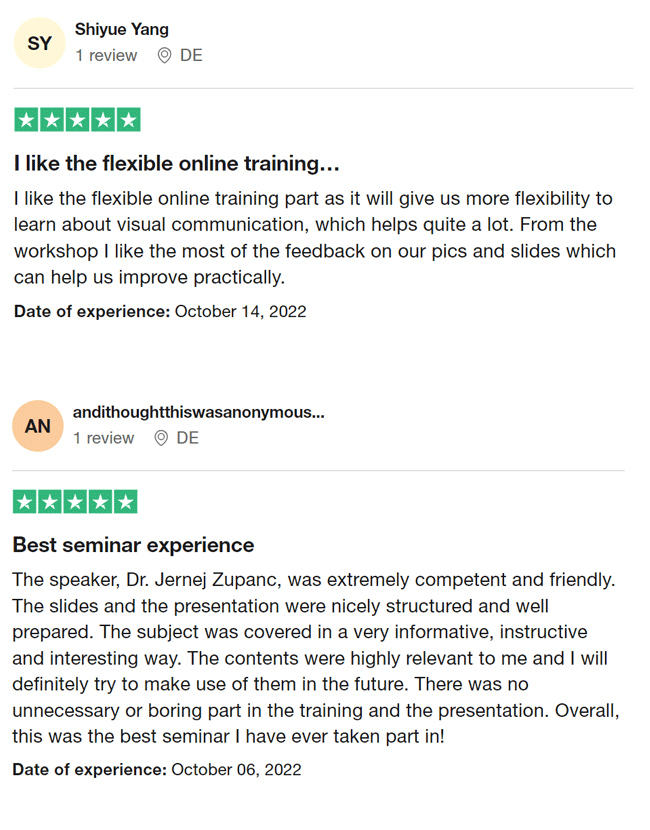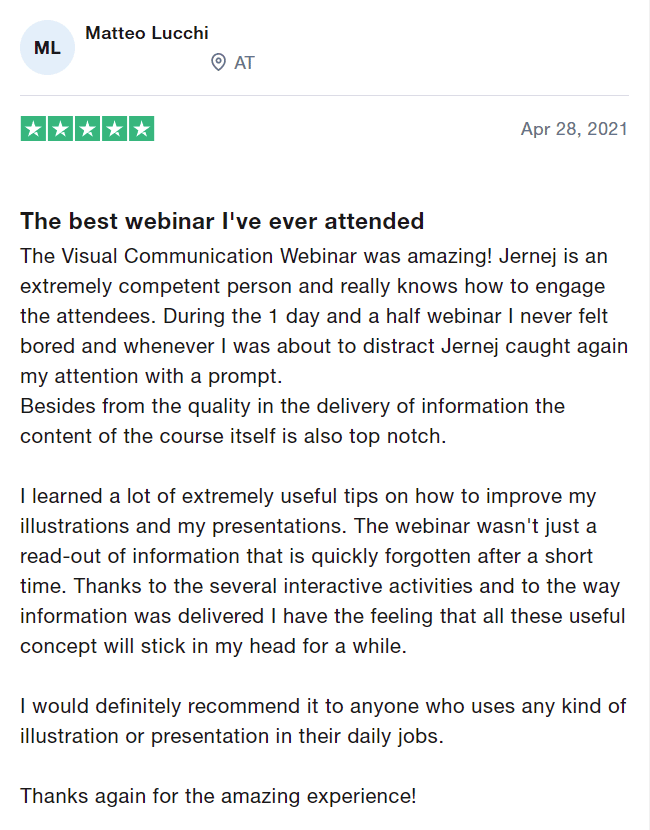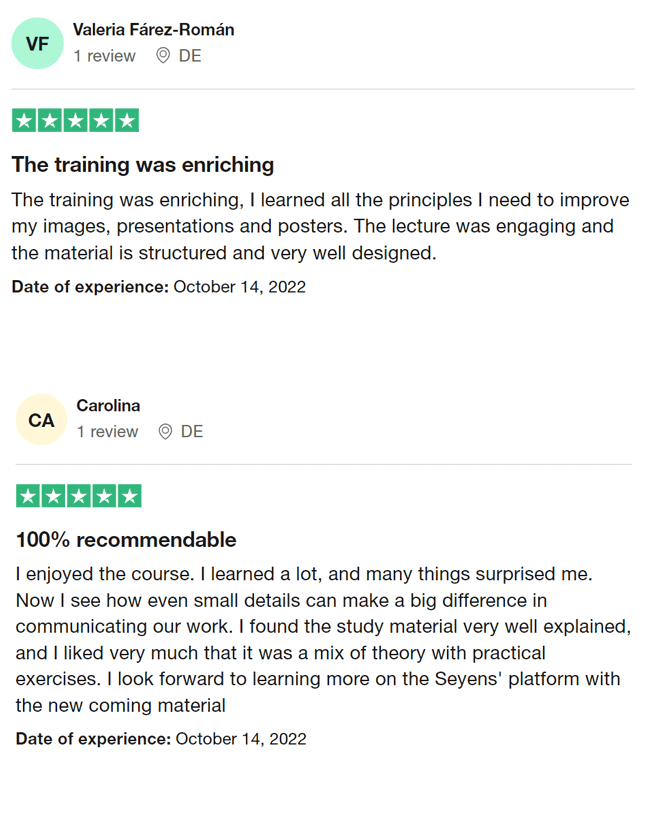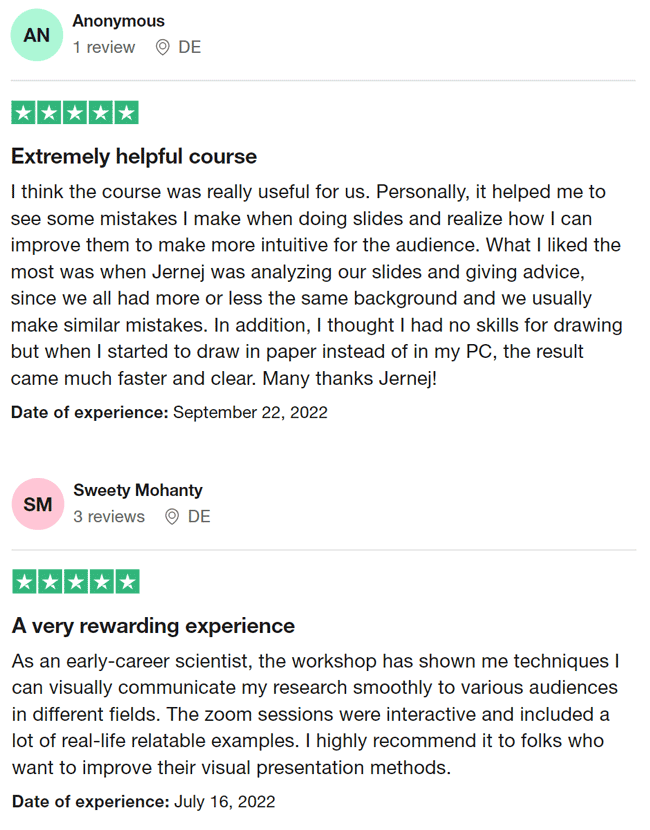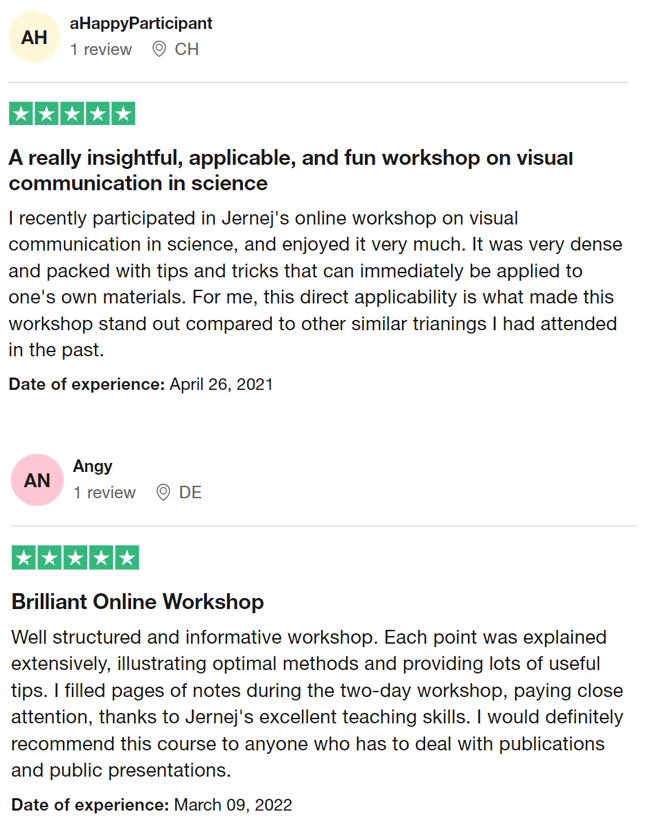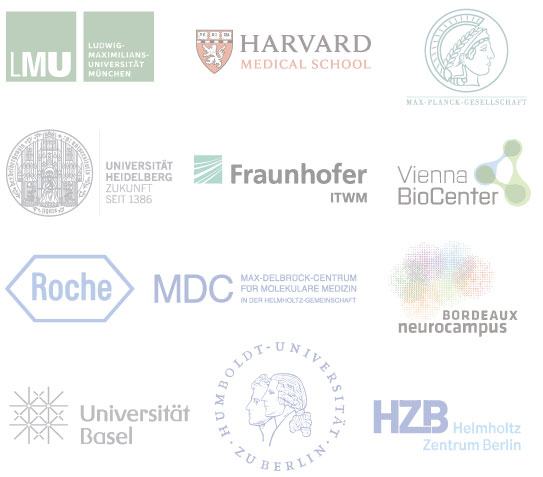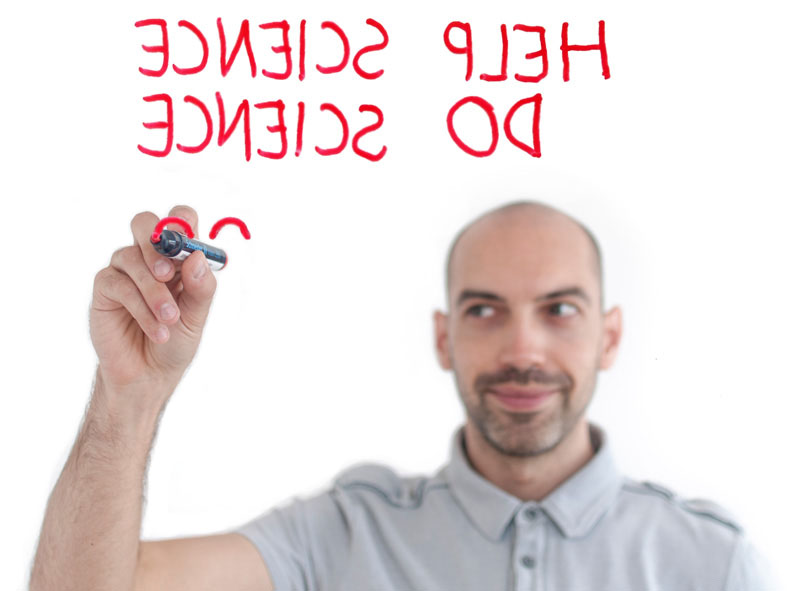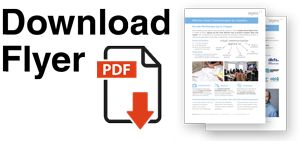Effective Visual Communication of Science
Take Your Publications, Posters, and Slides To The Next LevelWith a Proven System to Visualize Your Ideas and Findingsand Make Your Messages Easier to Understand
Sign up to be immediately notified when a free webinar and an online course become available!
Privacy Protected – Absolutely No Spam!
Proven & Globally Trusted
Most loved training at many of 150+ excellent research institutions.
Already in 24 countries since 2013.
Work on Your Materials
Participants send their publications in advance. They get feedback and visualize their own research messages.
Comprehensive
The skills are transferrable and work for all types of science presentation and for communicating with diverse audiences.
Take Your Publications, Posters, and Slides To The Next Level!
My goal is to help you become a more effective communicator. I am able to facilitate an immersive online experience so you can learn while interacting with fellow scientists from the comfort of your home or office.
- Benefits for researchers: You will understand and learn to apply effective visual strategies to structure and design your images so your audiences will more easily understand your complex messages. This knowledge will be applied also to your slides and posters, so you learn how to apply it to all of your visual science communication and presentations. It is a training that fundamentally changes how participants think about communication, not only in science, but also in life.
- Personalized feedback & interactivity: you will be able to submit your materials (figures/slides) before the event. I will make a selection and give you personalized feedback. You will also discuss your materials with other participants and learn to receive and give informed and constructive feedback. It is an immersive webinar, structured, easy to follow, memorable, useful and fun.
Trusted by researchers at renowned institutions
Facilitated by a Former Scientist, Photographer and Fulbright Scholar
Dr. Jernej Zupanc
My goal is to help scientists effectively communicate.
Drawing on various fields, I am always on the lookout for new approaches that can be readily applied by researchers.
Besides workshops and webinars, I consult innovative companies in acquiring grants and private funding.
Before Seyens, I worked as Head of computer vision at a startup and as an evaluator of Horizon 2020 EU projects.
I hold a PhD and was a PostDoc in computer science at University of Ljubljana and a Fulbright Scholar at Northeastern University, Boston.
Frequently Asked Questions
Is this training for my stage of career?
The only prerequisite is experience with “reading scientific publications, creating a slide presentation, and some scientific research”
- MSc students: more advanced ones for sure. Please read the prerequisite above.
- PhD students: absolutely.
- PostDocs: yes, especially if you are applying for grants and are writing project proposals.
- Group leaders: yes, if you can invest at least 1 day, it is highly valuable. Many professors who attend say that they didn’t reply to any emails during the (online) training, which speaks for itself.
- Scientists with advance design skills: you might know a lot of what I cover, but the way the knowledge is connected into a system will be valuable.
Is this training for my research topic?
Science, technology, engineering, medicine:
- medical and health sciences
- biological/life sciences
- chemical sciences
- material sciences
- physics
- technology and engineering
- other fields where visual communication matters
Is there a specific software used during the workshop (like Adobe Illustrator, Inkscape, …) that I have to be familiar with?
No. The knowledge is software-agnostic. During the drawing exercise, most sketch on paper. If you want, you can use PowerPoint, Illustrator, Biorender, Gimp… no problem.
How interactive is the workshop?
Both on-site and online workshops are highly interactive. Many participants say that the online is the most interactive training they have ever experienced remotely. Discussion, quizzes, exercises, feedback, break out group work etc. Workshop is optimized for an engaging learning experience.
Do you award ECTS points for this training?
Many institutions award ECTS points for this training. Sometimes homework is required after the workshop and this is something useful, like creating a slide presentation, poster, graphical abstract etc.
How long are the live workshops?
Most institutions are booking the 1.5-day online workshop at the moment which takes approx. 7h30 on the first day and 4h30 on the second day.
Do I have to do any work before the workshop?
Everyone is invited to submit their scientific images and slides before the training.
What is the price of the training?
Live workshops are booked by organizers at institutions. At most institutions the workshop is free for participants.
Is this a data visualization workshop?
This is not a data visualization workshop like many out there, it is more an “information visualization”. I consider standard data visualization approaches (bar charts, box plots, scatter plots, line charts…) to be a subset of information visualization and explain how they fit into the framework discussed and how many of the same principles apply (visual hierarchy, color, typography etc.). Although my training used to include a long chapter on data visualization I don’t include it at the moment due to time constraints.
Does the training cover journal covers, 3D modelling or animation?
No. The fundamentals and approaches discussed in the training can to a certain extent be applied to any kind of visualization including the above mentioned. However, journal covers are usually a more creative/artistic endeavor and not a strategic communication, 3D modelling is very software specific, and animation (although valuable) has limited use in most of science communication.
What is your academic background?
BSc & PhD in Computer Science from University of Ljubljana (2011), Fulbright Scholar at Northeastern University (2009). Interdisciplinary research in bioimage informatics, large scale microscopy.
